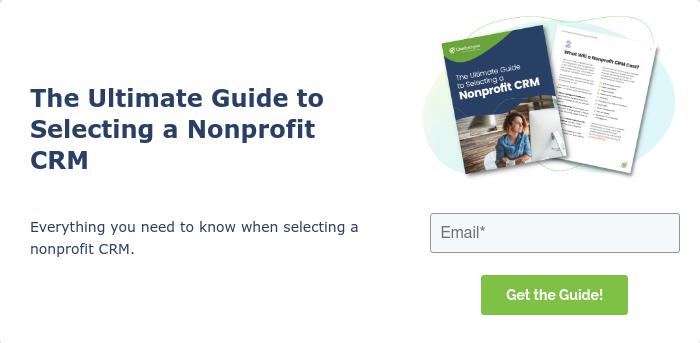
Regulatory Changes Can Cause Concern
There are a few different ways regulatory changes can impact donors.
- If a regulatory shift changes the limit of what is tax deductible, this can cause donors to increase or decrease what they contribute.
- If there are increased requirements for transparency and reporting, donor confidence can grow if they see nonprofits using funds responsibly (this is particularly true for major donors or foundations).
- Data privacy regulations can limit marketing and fundraising.
- Even corporate giving regulations, such as tax incentives for matching gift programs, can influence donor behavior.
It is crucial that nonprofits keep a close eye on proposed tax policies during presidential campaigns and be ready to adapt fundraising strategies based on potential changes. You can also educate donors about the importance of their contributions to mitigate tax law changes.
And while nonprofits likely can’t swing regulatory votes, the takeaway is to always be a responsible steward of your donors’ money. Regulatory changes can expose scandals and fraud in the nonprofit sector or laws could be passed requiring stricter governance or accountability. You’ll want to be sure you’re in the clear, no matter what happens.
Consider Your Timing
Anecdotally, donations follow a pattern during election years. Nonprofits often experience a pre-election surge in donations as political engagement peaks, and then a more unpredictable or wobbly post-election period dependent on the outcome. This is, of course, going to be particularly true in years with highly contentious elections.
Savvy nonprofits will capitalize on these predictable swings. Pre-election, launch targeted campaigns that resonate with a heightened sense of civic responsibility. Regardless of what your mission is, capitalize on the general feeling that we’ve all got to do our part to make the world a better place.
Post-election, forget about politics and run messaging that taps into the emotion of your mission. Whether they are eager for a distraction or feeling energetic and optimistic about the future, offering a new focus and a concrete way to have an impact can be highly effective.
Donating Along Party Lines
It’s the elephant (and donkey) in the room, but it’s unavoidable…climate change, reproductive rights, and immigration are all going to see enormous fundraising shifts along party lines. There will be relatively equal fundraising success pre-election, but the party that takes office will likely see continued increases in donations while giving elsewhere slows a bit.
And it’s bigger than just the headlining issues. If your nonprofit skews conservative or liberal, you will see similar surges or downturns.
Unless your organization wants to lean into the political messaging, which many do and consider an effective strategy, it’s wise to choose an apolitical, mission-centric message and stick to it. It’s easier to take the slow and steady road than to try to bet on the outcome of an election!
Post-Election Philanthropy: Now What?
Presidential elections introduce both opportunities and challenges for nonprofits. Shifts in donor priorities, economic uncertainty, policy changes, political polarization, and increased media coverage and messaging can all shape donor behavior during election cycles.
Nonprofits must be prepared for almost any scenario after an election, developing strategies to reach out to donors with consistent, positive messaging about the importance of your mission. Continue to educate donors, show constant appreciation for their ongoing support, and encourage them to spread the word about the work you do.
Most of all, stay nimble, and understand that political volatility is short-term. It gives you a brief season to communicate in a slightly different or more intense way with your donors, so take advantage of that opportunity. When the dust settles, your nonprofit and your mission will still be there, and it will be time to go back to business as normal.



%20(10)-1.png)
%20(2)-1.png)
-1.png)